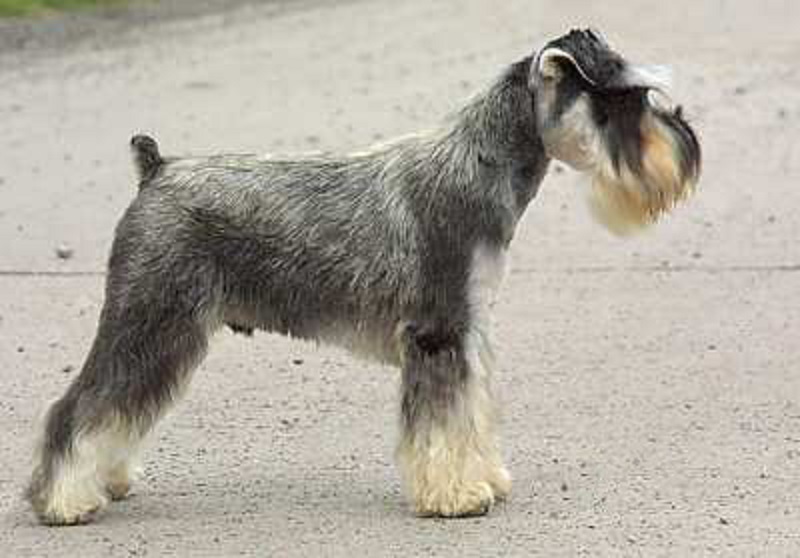
Miniature Schnauzer

Navigate through the tabs
Navigate through the tabs below to view the breed's info of your interest.
The breed's info is divided in four sections; namely:
the breed's history ,
the breed's main stats ,
the dog's potential health issues
and finally, how the breed scored in 26 different categories.
All the above information should give you a respectively good overview for the dog of your interest.
Dog Breed's Main Info
The Breed's History:
The earliest records surrounding development of the Standard Schnauzer in Germany come from the late 19th century. They were originally bred to be medium-sized farm dogs in Germany, equally suited to ratting, herding, and guarding property. As time passed, farmers bred the Standard Schnauzer into a smaller, more compact size for ratting by combining it with the Affenpinscher and Miniature Poodle.
The first recorded Miniature Schnauzer appeared in 1888, and the first exhibition was held in 1899.
The AKC accepted registration of the new breed in 1926, two years after Miniature Schnauzers were introduced to the United States. They were originally known as Wirehaired Pinschers. International Kennel Club classifications vary; in the United Kingdom and Australia they fall within the Utility Group, while in Canada they are in the Working Group.
In the AKC the Miniature Schnauzer is classed with the terriers.
It was recognized by the United Kennel Club in 1948 and also classed as a terrier. The start of the modern Miniature Schnauzer is generally considered to begin with Ch. Dorem Display, the first Miniature Schnauzer to win Best in Show at the Westminster Kennel Club Dog Show.
He was born 5 April 1945 and lived to be nearly fourteen. Almost every living Miniature Schnauzer in America can trace its lineage back to Dorem Display.
Miniature Schnauzers were the 11th most popular breed in the U.S in 2008, falling to 17th most popular in 2013.
Country of Origin:
Germany
Breed Group:
Terrier
Height:
1 foot to 1 foot, 2 inches (30,48 to 35,56 cm)
Weight:
11 to 20 pounds (4,99 to 9,08 Kg)
Life Span:
12 to 14 years
Potential Health Issues:
Von Willebrand's Disease,
Cataracts,
Entropion,
Progressive Retinal Atrophy (PRA),
Urinary Stones,
Myotonia Congenita,
Congenital Megaesophagus
Adaptability
Apartment Living:
First Time Owners:
Sensitivity:
Being Alone:
Cold Weather:
Hot Weather:
Friendliness
Affection With Family:
With Kids:
With Dogs:
With Strangers:
Health and Grooming
Shedding:
Drooling:
Easy To Groom:
Overall Health:
Weight Gain Potential:
Size:
Training
Easiness:
Intelligence:
Mouthiness:
Prey Drive:
Barking or Howling:
Wanderlust:
Need For Exercise
Energy Level:
Intensity:
Exercise Needs:
Playfulness:
Our Mobile Application
Check out Our Mobile Application "Dog Breeds Central"
